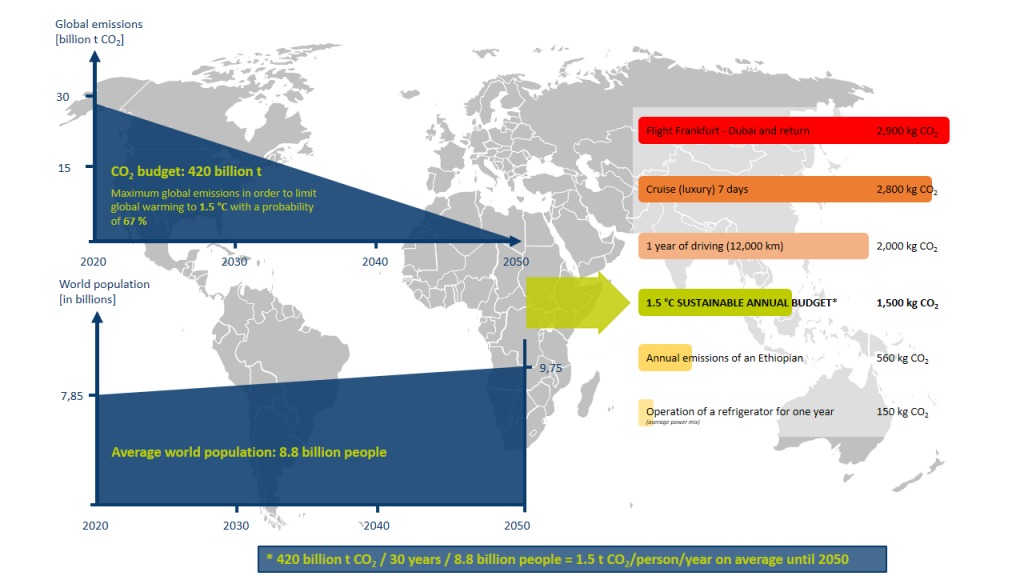In order to keep the effects of climate change within sustainable limits, the participating parties agreed at the UN Climate Conference in 2015 in Paris to limit average global warming to well below 2° C compared to pre-industrial levels.
Most scientists argue that it is necessary to limit global warming to 1.5° C because, if the temperature rises above this, dangerous tipping points in the global climate system can no longer be avoided.
In a special report at the end of 2018, the Intergovernmental Panel on Climate Change (IPCC) calculated a global emissions budget of around 420 billion t CO₂ for a 1.5° C target from 2018 onwards. This amount applies to a scenario in which the 1.5° C target is reached with a probability of 67%. Unfortunately, an IPCC calculation for a higher probability of reaching the target (e.g. 95%) does not exist.

Calculation of the personal climate budget
If we assume, as many countries worldwide and the EU do, that the global economy has to be completely decarbonized by 2050, and with an assumed average world population of 8.8 billion people in the period from 2018 to 2050, this means that every person on this earth would be entitled to a climate-friendly budget of about 1.5 t CO₂ per year on average in order to reach the maximum warming target of 1.5° C. This average can be distributed irregularly, so that in the beginning, a person would have more than 1.5 t CO₂ annually, but later on, correspondingly less.


 Share
Share Tweet
Tweet